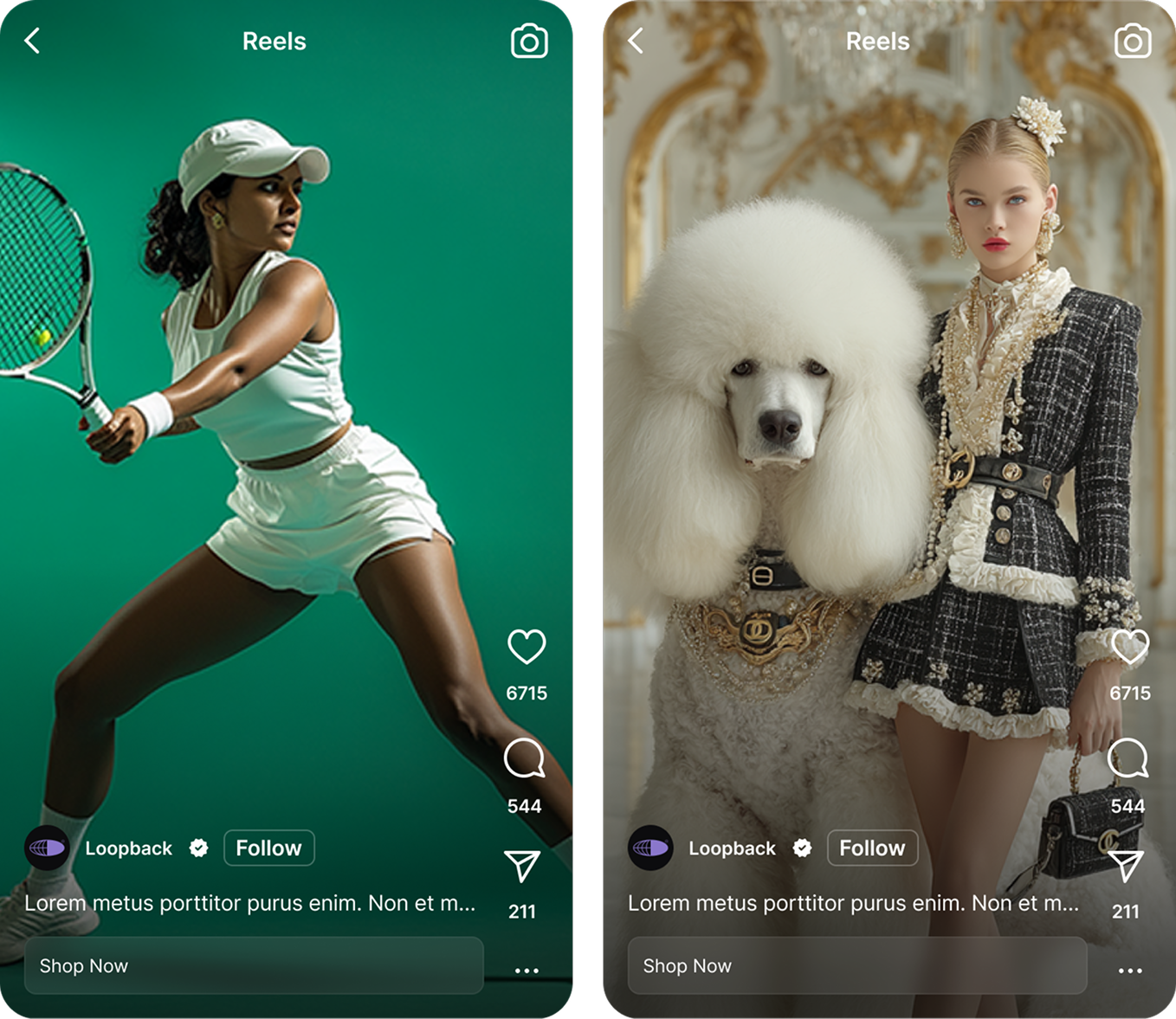How to Build a Performance-First Influencer Strategy for Black Friday

Black Friday is won by pairing creator trust with paid amplification and rigorous measurement so you only fund what works; start early, set unit economics, and lock your scorecard to ROAS, CPA, and CTR [1]. Lean into efficient reach: brands increasingly choose nano and micro creators for engagement density and cost control, making them ideal for BFCM’s noisy feeds [2]. Treat creators like a core lever: marketers are now allocating a decisive share of holiday budgets to influencer programs, not side bets [3]. Prime demand before CPMs spike by encouraging opt-ins/follows and A/B testing hooks, formats, and CTAs so your paid dollars back only proven winners [4]. Finally, measure beyond last click—use codes, UTMs, and post-purchase surveys to capture halo and retention value by creator and fund the assets that compound post-sale [5].
From Zero to Launch: A Two-Track Timeline (Early vs. Just-in-Time)
Work from two timelines: an ideal early builder track (June–October) and a just-in-time track (September–November). Both aim to validate creative angles early, structure clean data, and scale only what meets your unit economics. The objective is a repeatable pipeline that moves content from organic into paid with whitelisting, then funds winners with disciplined iteration during BFCM’s tight windows.
Early builder (June–October)
- Define outcomes and unit economics by SKU: target CPA/ROAS, break-even windows, allowable discount depth, and post-promo LTV assumptions.
- Map the customer journey: pinpoint creator placements across pre-purchase education, offer reveals, checkout reassurance, and first-use guidance.
- Design your program: micro/nano mix, verticals, audience niches, disclosure rules, whitelisting permissions, and Partnership Ads readiness.
- Run a July–August test: seed products; issue briefs with 3–5 angles (deal reveal, bundle build, giftability, comparison, objection-handling); boost top posts lightly.
- September data build: implement UTMs, unique codes/links, post-purchase surveys with influencer dropdown, SKU revenue mapping, and creator cohorts.
Just-in-time launcher (September–November)
- September: lock offers, inventory, and landing pages; pre-book creators; seed products with shoot deadlines and brand-safe music guidance.
- October: soft-launch creatives to learn hooks, CTAs, and formats (UGC, GRWM, listicles, live shopping, stories); assemble a bench of top performers for scale.
- November: scale winners; duplicate ad sets by angle and audience; pulse spend into pre-BF, BF, CM, and post-CM extensions aligned to intent windows.
Content system to ship at speed
- Creative matrix: format (shorts, stories, carousels), angle (urge, benefit, price), audience (gift-givers, loyalists, switchers), offer tier (teaser vs. doorbuster).
- Compliance: FTC/ASA disclosures baked into scripts, platform music rights confirmed, brand safety guardrails with escalation paths.
- Ops: reshoot SLAs (48–72 hours), file naming conventions, and a central asset library tagged by creator, SKU, angle, and rights.
Creators as the Engine, Paid as the Turbo: Content, Whitelisting, and Weekly Iteration
Turn organic performance into paid scale through a disciplined pipeline. Secure whitelisting/Partnership Ads rights in creator contracts, keep tests cheap until you observe consistent CTR and CPA wins, and iterate weekly using a simple, ruthless scorecard. Treat every asset as a hypothesis, not a hero.
Organic-to-paid pipeline
- Source UGC and creator posts; request whitelisting; relaunch as Partnership/Creator Ads with lightweight spend caps.
- Test 3–5 hooks per concept: problem-pain, deal-first, credibility proof, giftability, and speed-to-benefit.
- Scale only when KPIs hold post-learning: CTR rises, CPC falls, CVR stabilizes, and CPA beats your channel target.
Weekly creative iteration
- Monday: review scorecards by creator/angle for hook retention, CTR, CPC, CVR, CPA, ROAS.
- Tue–Wed: reshoots and fresh hooks; cutdowns at 6/12/20 seconds; add subtitles; rehook first three seconds.
- Thursday: launch new variations; isolate winners by audience (broad, stacked interests, creator lookalikes, site visitors).
- Fri–Sun: monitor frequency caps; rotate angles to avoid fatigue; refresh thumbnails and CTAs.
Offer mechanics that convert
- Anchor price against MSRP, bundle hero SKUs, timebox aggressively, set quantity limits, add free gifts, and enable split payments.
Case study: Partnership Ads lower CPA in practice
Handyhuellen case study shows how creator-based audiences, AI-supported selection, and Partnership Ads combined to reduce CPA by 17.4% while maintaining positive ROI during competitive periods. Apply the same pattern: identify an organic winner, secure whitelisting, duplicate ad sets by angle and audience, then scale the proven variant while enforcing frequency caps and daily KPI thresholds.
Handyhuellen case study
 Learn more
Learn more
Own Your Data: Instrumentation, Attribution, and the Daily War-Room Scorecard
BFCM compresses learning cycles; your instrumentation and governance must compress action cycles. Build a single source of truth that merges platform data, site analytics, e‑commerce revenue, and survey signals at the creator + asset + angle level. Update it daily, act on it daily.
Must-have instrumentation
- UTMs at influencer/creative/angle granularity; unique codes and deep links that match landing content 1:1.
- SKU-level revenue mapping to attribute true margin; unify pixel/cookie events with server-side tracking where available.
- Post-purchase survey: influencer dropdown + open text to capture assisted exposure and dark social mentions.
- Creator cohorts: first-touch, last-touch, and blended models; track 7/30/60-day value to capture halo and repeat.
Scorecard blueprint (update daily; act daily)
- Inputs by creator and hook: spend, impressions, CTR, CPC, CVR, CPA, AOV, ROAS, and refund/return rates where possible.
- Decisions: promote top 20% creators/angles; pause bottom 30%; request reshoots from the middle 50% with explicit briefs.
- Reallocate budgets by window and inventory status; pre-approve creative templates to launch within hours.
Testing at peak intent
- Separate budgets for Pre-BF tease, BF 24–48 hours, CM 24–48 hours, and Post-CM last-chance; calibrate landing pages accordingly.
- Speed discipline: change logs, naming conventions, and stand-ups to compress time-to-decision to hours, not days.
Scaling Without Waste: Audience Architecture, Geo-Expansion, and Inventory Reality
Scale is only profitable when your audience structure and inventory signals are in lockstep with creative learnings. Build from broad to precision while matching localized offers to market realities and protecting margin with real-time inventory hooks.
Audience architecture
- Start broad with creator allowlists; layer stacked interests after finding signal; launch creator lookalikes (page engagers, video viewers, purchasers).
- Retarget high-intent cohorts: engagers, PDP viewers, carts; pace frequency and refresh creatives every 48–72 hours during peak days.
Geo and localization
- Localize currencies, shipping promises, and creative hooks; schedule posts for local peak shopping windows.
- Replicate the playbook across markets with a central brief and local creator voice; tune offer ladders to regional elasticity.
Inventory-aware scaling
- Tie ad sets to in-stock SKUs; auto-pause on OOS signals; implement offer swaps and dynamic pricing where permissible.
Case study: ROAS lift through AI-driven cross-border scaling
Zelesta case study demonstrates how centralized briefs, AI-driven creator selection, and localized execution across six EU markets produced a 76% ROAS uplift with 98 high-fit creators and 128 assets. The takeaway: centralize the measurement and creative framework, but let local voices adapt hooks, offers, and proof points to accelerate fit without trading off efficiency.
Zelesta case study
 Learn more
Learn more
Budgeting, Compensation, and Ops: Make Every Dollar Work Harder
Treat creators as a performance channel with strict economics and pre-approved levers for testing. Separate test and scale budgets, structure compensation to reward outcomes, and operationalize the workflow so creative and spend can move hours, not days.
Budget framework
- Allocate ~21–30% of holiday spend to creators; earmark distinct testing budgets for BF and CM; reserve contingency funds for surprise winners.
- Use waterfall rules: initial learning spend per angle/creator; double-down thresholds (e.g., CPA within 10% of target for 48 hours) before scale.
Compensation models
- Blend gifting, flat fees, and rev-share/affiliate; bonus creators for beating CPA or ROAS thresholds; secure whitelisting rights upfront.
- Offer tiered incentives and reshoot fees tied to performance benchmarks to keep iteration flowing.
Workflow and tooling
- Select vendors that cover discovery fit, whitelisting/Partnership Ads, contract automation, UTM/code automation, and SKU-level reporting.
- Standardize templates: briefs, shot lists, disclosure language, usage rights, and reshoot SLAs; enforce naming conventions and change logs.
Case study: Stretching budget via gifting at scale
Secret Sales case study engaged 25 creators through gifting-only compensation, delivering a 16× overall ROAS with zero creator fees. This is a powerful unlock when cash fees are constrained: lead with product value, set clear content SLAs, and redeploy savings to paid amplification of the top-performing posts.
Secret Sales case study
 Learn more
Learn more
Beyond the Weekend: Retention, LTV, and the Post-Mortem That Pays for Next Year
BFCM success compounds when new customers become high-LTV cohorts and your team captures learnings that shorten next year’s path to profit. Treat the 10 days after Cyber Monday as both an onboarding sprint and a forensic debrief that funds your next cycle.
Turn BFCM buyers into long-term value
- Creator-driven onboarding: how-tos, first-week tips, and ways to get more from the product; use the same voices that closed the sale.
- Upsell bundles and membership/subscription offers that mirror winning ad angles; time-limited VIP upgrades for BFCM cohorts.
- Referral loops: creator codes that reward customers for sharing with friends; track referral LTV separately.
The 72-hour post-mortem
- Freeze dashboards and export by creator, asset, hook, audience, and window; calculate blended and cohort ROAS.
- Debrief creators and internal teams; document top hooks, formats, and offers; build a “re-run pack” for Q1 promos and next BFCM.
- Finalize a playbook: what to start/stop/continue; update SLAs and approval workflows to cut hours from future cycles.
Risk and recovery for next year
- Pre-bake backup creators, duplicate landing pages, and alternate payment providers; keep inventory buffers for hero SKUs.
- Simulate stress cases: OOS triggers, shipping delays, and creative fatigue; pre-approve copy/creative fallbacks for rapid swaps.
If you build the pipeline now—creators as the engine, paid as the turbo, and a scorecard that funds only what works—BFCM becomes a predictable growth play. When you’re ready, align your team on this cadence and start testing.
Get started with The Cirqle today.
Give your team the power and speed they need to find the right partners and grow your brand.
%201.avif)






